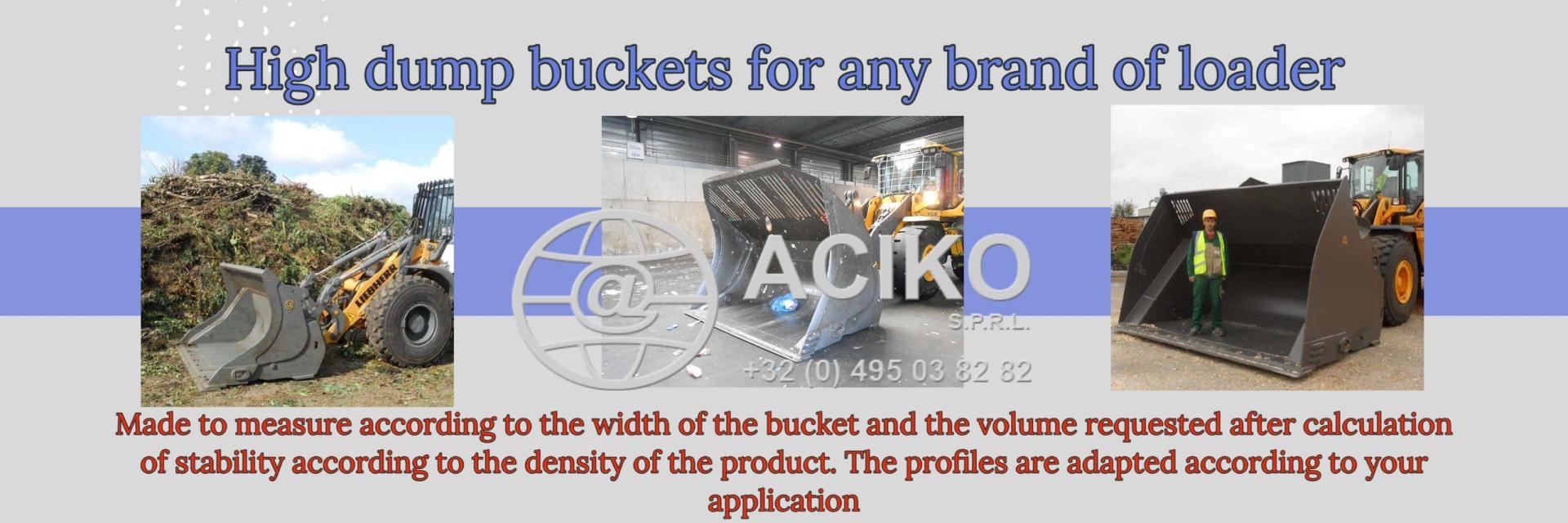R.E.News future Technology-FIRE Project Ignites Africa’s Transition to PFAS-Free Firefighting Foams
 27/08/25-FR-English-NL-footer
27/08/25-FR-English-NL-footer
Le projet FIRE embrase la transition de l’Afrique vers des mousses anti-incendie sans PFAS
 Image-R.E.News©
Image-R.E.News©
Nairobi, 2025 – L’ONU Environnement (UNEP) et l’Organisation de l’aviation civile internationale (OACI) s’associent pour lancer une initiative d’envergure visant à transformer la sécurité incendie dans les aéroports africains. Baptisé FIRE – Fortifying Infrastructure for Responsible Extinguishment, ce programme de 82,5 millions de dollars ambitionne de remplacer les mousses anti-incendie fluorées, nocives et persistantes, par des alternatives sans fluor, plus sûres et durables.
Porté par une subvention de 10 millions de dollars du Fonds pour l’environnement mondial (FEM/GEF) et complété par 72,5 millions de cofinancements, le projet sera déployé dans cinq pays pilotes : Égypte, Éthiopie, Kenya, Nigéria et Afrique du Sud. Ces États seront à l’avant-garde de l’élimination des PFAS, surnommés « polluants éternels » en raison de leur extrême résistance et de leurs effets délétères sur la santé humaine et l’environnement.
Un danger invisible, une urgence mondiale
Longtemps plébiscités pour leur efficacité à éteindre les feux de carburant, les PFAS se révèlent être une menace sanitaire et écologique redoutable. Ces substances chimiques sont associées à des cancers, atteintes hépatiques, perturbations immunitaires et s’accumulent durablement dans le sol, l’eau et même le corps humain.
Le projet FIRE poursuit une double mission : éliminer ces mousses toxiques sans compromettre la sécurité aéronautique. Concrètement, il s’agit de retirer et d’éliminer en toute sécurité 4 500 tonnes de matériel contaminé et 130 tonnes de concentrés de mousses à base de PFAS, tout en garantissant que les aéroports respectent les standards d’intervention d’urgence les plus stricts.
Une transition portée par la collaboration internationale
Pour Anil Sookdeo, spécialiste principal des produits chimiques au GEF :
« FIRE démontre comment une action sectorielle ciblée peut transformer les chaînes de valeur et éliminer des substances dangereuses. Nous espérons que cette initiative inspirera non seulement les pays participants, mais l’ensemble du secteur aéronautique. »
De son côté, Sheila Aggarwal-Khan, directrice de la Division Industrie et Économie de l’UNEP, insiste :
« Ce projet prouve qu’il est possible d’allier protection de l’environnement, santé publique et viabilité opérationnelle. »
Au Kenya, le lancement est perçu comme une avancée majeure. Dr Mohamud Gedi, PDG de l’Autorité des aéroports du Kenya, affirme :
« En éliminant les PFAS, nous protégeons nos communautés et construisons un avenir plus sûr et plus propre. »
Juan Carlos Salazar, secrétaire général de l’OACI, renchérit :
« L’accès à des alternatives sûres aux mousses à base de PFAS constitue une étape décisive pour les pays bénéficiaires. »
Enfin, Rolph Payet, secrétaire exécutif de la Convention de Bâle, Rotterdam et Stockholm, rappelle l’urgence :
« Les PFAS sont une bombe à retardement invisible. FIRE illustre la coopération multilatérale et l’innovation nécessaires pour désamorcer cette menace. »
Au-delà de l’aviation, un modèle pour la planète
FIRE s’inscrit dans une initiative plus vaste menée par l’UNEP et le FEM pour éradiquer les polluants organiques persistants (POP) à l’échelle mondiale. Depuis plus de 30 ans, le FEM a mobilisé plus de 26 milliards de dollars de financements et 153 milliards en cofinancements pour relever les défis environnementaux les plus pressants.
Les impacts du projet dépasseront le secteur aéronautique :
Pour les constructeurs et planificateurs d’infrastructures aéroportuaires, il s’agit d’intégrer dès aujourd’hui des systèmes d’extinction adaptés aux mousses sans PFAS.
Pour les investisseurs, FIRE annonce un durcissement inévitable des réglementations, ouvrant la voie à de nouvelles opportunités alignées avec la conformité environnementale.
Pour les décideurs publics, ce programme devient un modèle reproductible pour éliminer des substances dangereuses dans d’autres secteurs.
Un avenir plus sûr prend racine en Afrique
Le projet FIRE ne se limite pas à remplacer un produit chimique : il démontre qu’un secteur aussi critique que l’aviation peut accélérer une transition durable sans sacrifier la performance.
Alors que les opérations se déploient dans les aéroports les plus fréquentés du continent, l’Afrique se positionne en pionnière d’une mutation mondiale, observée de près par d’autres régions prêtes à suivre l’exemple.
FIRE n’éteint pas seulement les flammes : il allume l’espoir d’un avenir plus sûr, plus sain et plus respectueux de la planète.
NJC.© Info UN Environment Programm International Civil Aviation Organization
---------------------------------------------------------------------------------------------------------------
 27/08/25-English
27/08/25-English
The FIRE Project Ignites Africa's Transition to PFAS-Free Firefighting Foams
 Image-R.E.News©
Image-R.E.News©
Nairobi, 2025 – UN Environment (UNEP) and the International Civil Aviation Organization (ICAO) are partnering to launch a major initiative to transform fire safety at African airports. Called FIRE – Fortifying Infrastructure for Responsible Extinguishment, this $82.5 million program aims to replace harmful and persistent fluorinated firefighting foams with safer and sustainable fluorine-free alternatives.
Supported by a $10 million grant from the Global Environment Facility (GEF) and supplemented by $72.5 million in co-financing, the project will be implemented in five pilot countries: Egypt, Ethiopia, Kenya, Nigeria, and South Africa. These states will be at the forefront of eliminating PFAS, nicknamed "forever pollutants" due to their extreme resilience and harmful effects on human health and the environment.
An invisible danger, a global emergency
Long praised for their effectiveness in extinguishing fuel fires, PFAS are proving to be a formidable health and environmental threat. These chemicals are associated with cancer, liver damage, immune system disruption, and accumulate over time in soil, water, and even the human body.
Project FIRE has a dual mission: to eliminate these toxic foams without compromising aviation safety. Specifically, this involves the safe removal and disposal of 4,500 tons of contaminated equipment and 130 tons of PFAS-based foam concentrates, while ensuring that airports meet the strictest emergency response standards.
A Transition Driven by International Collaboration
For Anil Sookdeo, Senior Chemicals Specialist at GEF:
"FIRE demonstrates how targeted sectoral action can transform value chains and eliminate hazardous substances. We hope this initiative will inspire not only the participating countries, but the entire aviation sector."
For her part, Sheila Aggarwal-Khan, Director of UNEP's Industry and Economics Division, emphasizes:
"This project proves that it is possible to combine environmental protection, public health, and operational sustainability."
In Kenya, the launch is seen as a major step forward. Dr. Mohamud Gedi, CEO of the Kenya Airports Authority, states:
"By eliminating PFAS, we are protecting our communities and building a safer, cleaner future." »
Juan Carlos Salazar, Secretary General of ICAO, added:
"Access to safe alternatives to PFAS-based foams is a decisive step for beneficiary countries."
Finally, Rolph Payet, Executive Secretary of the Basel, Rotterdam, and Stockholm Convention, reiterated the urgency:
"PFAS are an invisible time bomb. FIRE exemplifies the multilateral cooperation and innovation needed to defuse this threat."
Beyond Aviation, a Model for the Planet
FIRE is part of a broader initiative led by UNEP and the GEF to eradicate persistent organic pollutants (POPs) globally. For more than 30 years, the GEF has mobilized more than $26 billion in financing and $153 billion in co-financing to address the most pressing environmental challenges.
The project's impacts will extend beyond the aviation sector:
For airport infrastructure builders and planners, it means integrating fire suppression systems adapted to PFAS-free foams today.
For investors, FIRE heralds an inevitable tightening of regulations, opening the way to new opportunities aligned with environmental compliance.
For policymakers, this program is becoming a replicable model for eliminating hazardous substances in other sectors.
A safer future takes root in Africa
The FIRE project is not just about replacing a chemical: it demonstrates that a sector as critical as aviation can accelerate a sustainable transition without sacrificing performance.
As operations roll out at the continent's busiest airports, Africa is positioning itself as a pioneer in a global transformation, closely watched by other regions ready to follow suit.
FIRE doesn't just extinguish flames: it ignites hope for a safer, healthier, and more planet-friendly future.
NJC.© Info UN Environment Programm International Civil Aviation Organization
-----------------------------------------------------------------------------------------------------------------
 27/08/25-NL
27/08/25-NL
Het FIRE-project stimuleert de overgang van Afrika naar PFAS-vrij blusschuim
 Image-R.E.News©
Image-R.E.News©
Nairobi, 2025 – Het Milieuagentschap van de VN (UNEP) en de Internationale Burgerluchtvaartorganisatie (ICAO) werken samen aan een grootschalig initiatief om de brandveiligheid op Afrikaanse luchthavens te verbeteren. Dit programma, genaamd FIRE – Fortifying Infrastructure for Responsible Extinguishment, heeft een waarde van $ 82,5 miljoen en is gericht op het vervangen van schadelijk en persistent gefluoreerd blusschuim door veiligere en duurzamere fluorvrije alternatieven.
Het project, ondersteund door een subsidie van $ 10 miljoen van de Global Environment Facility (GEF) en aangevuld met $ 72,5 miljoen aan cofinanciering, zal worden uitgevoerd in vijf pilotlanden: Egypte, Ethiopië, Kenia, Nigeria en Zuid-Afrika. Deze landen zullen voorop lopen bij de eliminatie van PFAS, ook wel "eeuwigdurende verontreinigende stoffen" genoemd vanwege hun extreme veerkracht en schadelijke effecten op de menselijke gezondheid en het milieu.
Een onzichtbaar gevaar, een wereldwijde noodsituatie
PFAS, al lang geprezen om hun effectiviteit bij het blussen van brandstofbranden, blijken een enorme bedreiging voor de gezondheid en het milieu te vormen. Deze chemicaliën worden in verband gebracht met kanker, leverschade en verstoring van het immuunsysteem, en hopen zich na verloop van tijd op in de bodem, het water en zelfs het menselijk lichaam.
Project FIRE heeft een dubbele missie: deze giftige schuimen elimineren zonder de luchtvaartveiligheid in gevaar te brengen. Concreet gaat het om de veilige verwijdering en afvoer van 4500 ton besmette apparatuur en 130 ton PFAS-gebaseerde schuimconcentraten, en tegelijkertijd ervoor te zorgen dat luchthavens voldoen aan de strengste normen voor noodhulp.
Een transitie gedreven door internationale samenwerking
Voor Anil Sookdeo, Senior Chemicals Specialist bij GEF:
"FIRE laat zien hoe gerichte sectorale actie waardeketens kan transformeren en gevaarlijke stoffen kan elimineren. We hopen dat dit initiatief niet alleen de deelnemende landen, maar de hele luchtvaartsector zal inspireren."
Sheila Aggarwal-Khan, directeur van de afdeling Industrie en Economie van UNEP, benadrukt:
"Dit project bewijst dat het mogelijk is om milieubescherming, volksgezondheid en operationele duurzaamheid te combineren."
In Kenia wordt de lancering gezien als een grote stap voorwaarts. Dr. Mohamud Gedi, CEO van de Kenya Airports Authority, stelt:
"Door PFAS te elimineren, beschermen we onze gemeenschappen en bouwen we aan een veiligere, schonere toekomst." »
Juan Carlos Salazar, secretaris-generaal van de ICAO, voegde eraan toe:
"Toegang tot veilige alternatieven voor PFAS-schuim is een beslissende stap voor de begunstigde landen."
Tot slot benadrukte Rolph Payet, uitvoerend secretaris van het Verdrag van Bazel, Rotterdam en Stockholm, de urgentie:
"PFAS zijn een onzichtbare tijdbom. FIRE is een voorbeeld van de multilaterale samenwerking en innovatie die nodig zijn om deze dreiging onschadelijk te maken."
Verder dan de luchtvaart: een model voor de planeet
FIRE maakt deel uit van een breder initiatief onder leiding van UNEP en het GEF om persistente organische verontreinigende stoffen (POP's) wereldwijd uit te bannen. Al meer dan 30 jaar mobiliseert het GEF meer dan $ 26 miljard aan financiering en $ 153 miljard aan cofinanciering om de meest urgente milieuproblemen aan te pakken.
De impact van het project zal verder reiken dan de luchtvaartsector:
Voor bouwers en planners van luchthaveninfrastructuur betekent dit de integratie van brandblussystemen die zijn aangepast aan PFAS-vrije schuimen.
Voor investeerders luidt FIRE een onvermijdelijke aanscherping van de regelgeving in, wat de weg opent naar nieuwe kansen die aansluiten bij de naleving van milieuvoorschriften.
Voor beleidsmakers ontwikkelt dit programma zich tot een repliceerbaar model voor het elimineren van gevaarlijke stoffen in andere sectoren.
Een veiligere toekomst wortelt in Afrika
Het FIRE-project gaat niet alleen over het vervangen van een chemische stof: het laat zien dat een sector zo cruciaal als de luchtvaart een duurzame transitie kan versnellen zonder dat dit ten koste gaat van de prestaties.
Nu de activiteiten op de drukste luchthavens van het continent worden uitgerold, positioneert Afrika zich als een pionier in een wereldwijde transformatie, nauwlettend gevolgd door andere regio's die klaar staan om dit voorbeeld te volgen.
VUUR dooft niet alleen vlammen: het wekt hoop op een veiligere, gezondere en milieuvriendelijkere toekomst.
NJC.© Info UN Environment Programm International Civil Aviation Organization
------------------------------------------------------------------------------------------------------------------
Date de dernière mise à jour : 26/08/2025
















